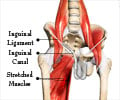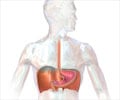Hernias Incidence
About 25% of males and 2% of females develop inguinal hernias; this is the most common hernia in males and females.
Data from developing countries is limited hence the exact prevalence and incidence is not known. Gender and anatomic distribution of Hernias is believed to be similar to developed countries. Generally most of the hernias occur in the groin in adults.
- Approximately 75% of all hernias occur in the groin; two thirds of these hernias are indirect and one third direct.
- Indirect inguinal hernias are the most common hernias in both men and women; a right-sided predominance exists.
- Incisional and ventral hernias account for 10% of all hernias.
- Only 3% of hernias are femoral hernias.
- Between 10% and 30% of children have an abdominal wall hernia; most hernias of this type close spontaneously by age 1 year.
- The incidence of incarcerated or strangulated hernias in children is 10-20%; 50% of these occur in infants younger than 6 months.
Sex:
- Approximately 90% of all inguinal hernia occur in males.
- Femoral hernias (although rare) occur almost exclusively in women because of the differences in the pelvic anatomy.
- The female-to-male ratio of Obturator hernias is 6:1.
Age:
- Indirect hernias usually present during the first year of life, but they may not appear until middle or old age.
- Direct hernias occur in older patients as a result of relaxation of abdominal wall musculature and thinning of the fascia.
- Umbilical hernias usually occur in infants and reach their maximal size by the first month of life. Most hernias of this type close spontaneously by the first year of life, with only a 2-10% incidence in children older than 1 year.


















